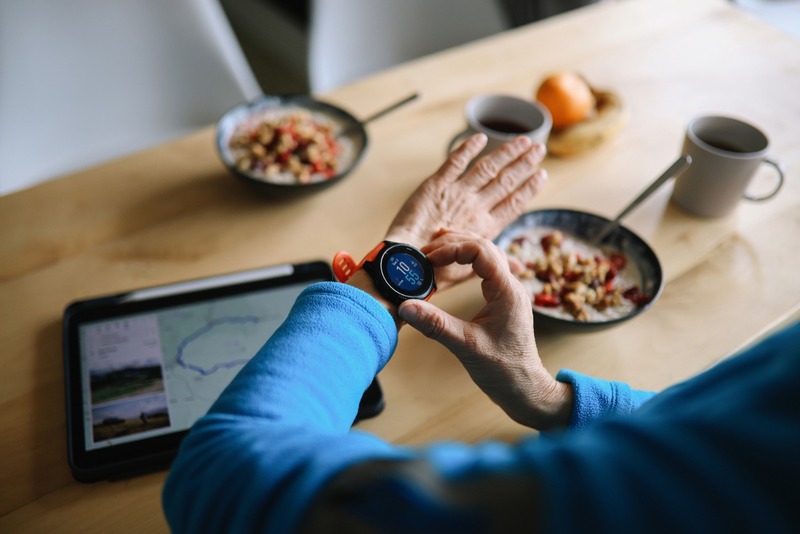News
Vail's 50th: A Conversation with Dr. Jack Eck
After 41 years Dr. Jack Eck will be hanging up his red coat with the white cross for the final time this season as he turns over his reins as medical advisor to the Vail Ski Patrol to Dr. Reginald Franciose.
This is my last year. I'm turning it over to Dr. Franciose said Eck one of Vail's first doctors and the current director of development at the Vail Valley Medical Center. This is my 41st year I've been [ski patrol's] medical advisor medical director and we're transitioning. I'm 70 years old and he's in his early 50s and cares a lot and it will take them to another level with what he knows of trauma.
Many observers say that's exactly what Eck did for the Vail Ski Patrol in the 1970s after landing in Vail following a tour as a flight surgeon in Vietnam. Eck was hired by Vail's first doctor Tom Steinberg in October of 1971.
Steinberg came to Vail in 1965 the year after Vail's medical clinic moved out of the Red Lion building where it was located the first three years (1962-64) of the ski resort's existence. But Texas oilman John Murchison an early Vail investor and founder of the NFL's Dallas Cowboys broke his ankle skiing in Vail and was transported by car on a long bumpy ride to the Aspen hospital for treatment. He then put up the money for a clinic in Vail's Mill Creek Court building from 1965 to 1967.
When Eck came along in 1971 the clinic was finally moved to its current location in what's now the hospital's administrative offices. The much bigger full-service facility then grew up around the old clinic in the decades to come with Eck playing a critical role in setting up the hospital's first intensive-care unit (ICU) in 1980.
Eck was the first medical advisor to the ski patrol and could often be spotted wearing the iconic red coat with the white cross on Vail Mountain. He helped establish a cardiac program after a pair of fatal heart attacks at Mid-Vail in the mid-1970s. And in later years he pushed hard to help make the VVMC a regional comprehensive health-care facility including the Shaw Regional Cancer Center in Edwards where Jack's Place A Cancer Caring House provides a welcome refuge for recovering cancer patients and their families.
But it all started in the late 60s when Eck was an intern at Presbyterian hospital in Denver and first came to Vail to ski. After he was drafted into the U.S. Army and punched his ticket to Vietnam Eck knew he wanted to come back and practice medicine in a ski town if he survived the war. Fortunately for Eagle County and the ski industry Eck landed in Vail 42 years ago.
To honor Vail's 50th anniversary season the Vail Business Journal is periodically talking to some of the founders and most influential people from Vail's rich and varied history. Click here to read our conversation with Rod Slifer and below find more insight from Dr. Jack Eck the Vail Valley Foundation's 2008 Vail Citizen of the Year:
VBJ: Talk about stepping down as medical advisor to Vail Ski Patrol and how working so closely with the patrollers over the years helped you deal with your experiences in Vietnam.
Eck: It's bitter sweet because I do enjoy it. I enjoy the camaraderie and with all my personal issues from Vietnam being associated with the patrol really helped me get through a lot of it. You hear about PTSD [post-traumatic stress disorder] and the problems guys are having. I understand how it happens. As far as I'm concerned the ski patrol saved my life by the camaraderie.
VBJ: How did your training and combat experience in Vietnam help shape how you approached your work with ski patrol?
Eck: When I came back from Vietnam it was in '72 and '73 when I spent a lot of time teaching [patrol] trauma because we were seeing a lot more of that. I was able to teach them a lot of the techniques that we learned in Vietnam and upgrade a lot of it and they were very good at that.
VBJ: And you were also seeing more medical issues such as heart attacks with less-fit tourists from the cities discovering Vail something that's an even bigger issue these days.
Eck: If you look at the number of people on a given day skiing Vail now it's 18000 to 20000. That's equivalent to a small-sized city and statistically in a city of 18000 to 20000 someone's going to get sick and have a heart attack or a diabetic reaction -- if you just do the numbers.
VBJ: In the early days you signed off when some of the patrollers put a defibrillator in old Samsonsite suitcase and called it a cardiac program right?
Eck: So you'd get out in the snow and sometimes the damn thing would freeze up and sometimes it would get wet. But we saved a couple of people.
VBJ: You were on the mountain a lot in the early days but what's your role been like with patrol in more recent years?
Eck: I carry a radio no matter what day I go up and if they have a cardiac or a bad trauma they know I'm on the mountain so they radio me and I'll go over to it. But I don't patrol-patrol.
VBJ: Eventually you got a lot of the other docs to chip in with patrol including some of Vail's world-renowned orthopedic surgeons. How has patrol benefitted and how has the medical community benefitted from that strong relationship?
Eck: We have a lot of eager helpers training the patrol and it's really worked well. Most of the paramedics with ECAD [Eagle County Ambulance District] they're all former patrol guys so on their days off from there they actually come in and put a uniform on and work on the mountain.
So we have coverage with a high level of skill for trauma and medical emergencies because one of them is almost always working up there. We've generated our own people and the neat thing is because these guys were patrol people and they do the patrolling and they're paramedics it really is a nice feed.
More News
-
New!
More

First Chair to Last Call: What Does Alcohol Really Mean For Your Health?
In nearly every Colorado ski town, some iteration of the neon sign blares its play-hard-party-harder anthem. It’s a not-so-subtle nod to mountain party culture, a lifestyle that normalizes combining sports and outdoor adventures with heavy drinking and partying. In Eagle County, après culture, high-altitude living and outdoor performance have coexisted for as long as locals have been sliding on snow. But how much is too much at altitude? And what role do social support systems play in helping residents find balance?
-
New!
More

Counting More Than Steps: How Wearables Can Help (or Hinder) Your Health
From step counts to sleep stages, heart rate variability to blood sugar spikes, wearable devices are giving us a front-row seat to what’s happening inside our bodies. Strapped to wrists, slipped onto fingers or wrapped around our biceps, wearables like the Oura Ring or Whoop strap promise insight and advice in the quest for better health.
-
More

Cass Barham and Sarah Crabtree Honored As Recipients of Vail Health Elevate Award
Cass Barham and Sarah Crabtree, both lab techs at Vail Health Hospital, have been named recipients of the Vail Health Elevate Award. Vail Health created the Elevate Award in June 2022 to give patients and their families an opportunity to nominate and thank employees who have touched their lives in some way.
